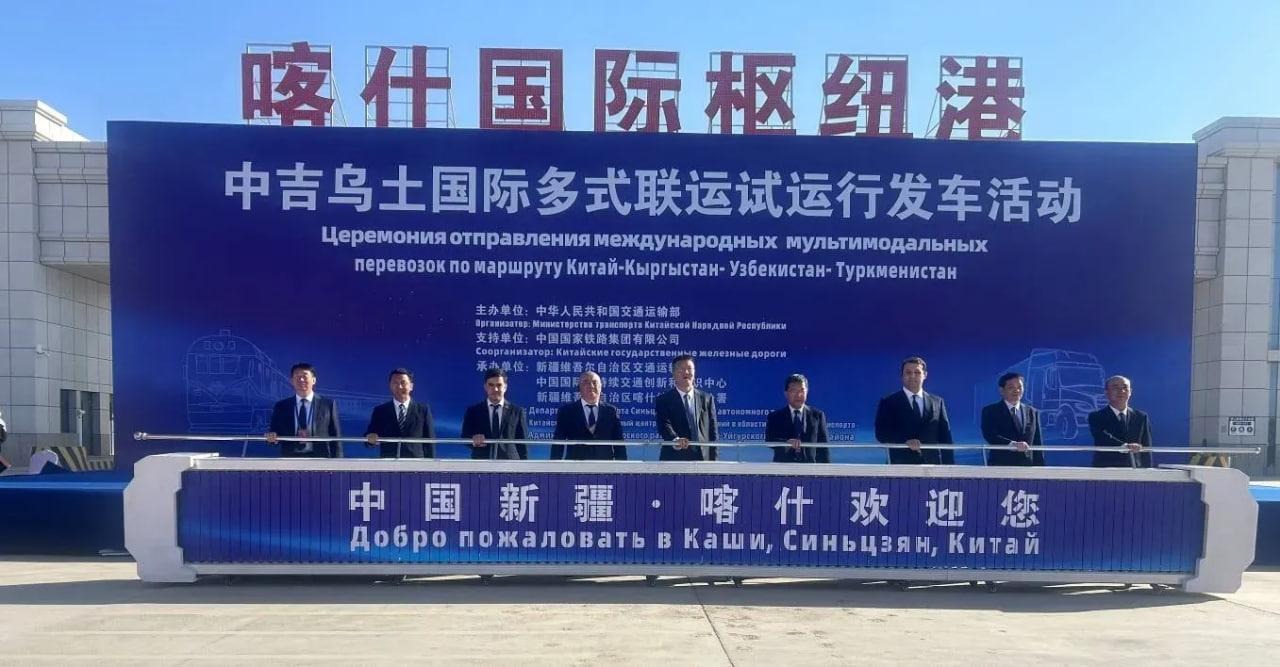
Strategic Implications of the Central Asia-China Gas Pipeline
Strategic Implications of the Central Asia-China Gas Pipeline
The opening of the Central Asia-China gas pipeline on December 14 (EDM, December 15) is fraught with momentous implications in Eurasia, Europe, and potentially on a global level. Russia’s near-monopsony on Turkmen gas has finally been broken. With Russia’s own gas production stagnant, loss of Turkmen volumes can translate into a net loss of Moscow’s economic and political leverage in Europe. Without a massive intake of Turkmen and other Central Asian gas, Russia can no longer sustain the geopolitical and business model of its gas trade with European countries (Turkmen government website, December 13, 14).
That model enabled Russia to absorb as much as 70 to 80 billion cubic meters (bcm) per year of Central Asian gas (some two thirds of it from Turkmenistan), creating an aggregate pool under Russia’s physical and political control. Moscow re-exported part of the Central Asian volumes to Europe while using another part within Russia itself, so as to redirect additional Siberian gas toward Europe through pipelines. Control of those aggregate volumes enabled Russia to maximize its leverage in Europe. It raised the price of its gas to artificially high levels, tied to long-term contracts, with pipeline-captive customer countries cut off from spot markets, and Gazprom expanding into European transmission and distribution systems.
This business model bred vested interests in privileged economic, political and strategic relations with the Kremlin in key European countries, undermining the development of European and Euro-Atlantic policies. It also made some European governments sensitive to their perceived dependence on Russian energy supplies, sometimes affecting these governments’ foreign policy decisions.
Russia’s leverage can only decline, thanks to its partial loss of the Central Asian gas intake, coupled with stagnation of Russia’s own gas production. Russia was facing an imminent gas shortfall (production levels versus the total internal and external supply commitments) before the financial-economic crisis had hit in 2008. The crisis reduced demand for gas, postponing the inevitable Russian shortfall. Once demand rebounds, the gap can only grow between Russia’s existing supply commitments and the gas volumes available to it, factoring in the partial loss of Central Asian volumes.
This new reality will undermine Russia’s already diminished credibility regarding long-term contracts for pipeline-delivered gas. Such contracts are Moscow’s preferred instrument for locking dependent customers in and locking competitors out. Gazprom’s big customers (including German companies) can no longer assume that Russia would meet its commitments to them with the help of Turkmen gas. Such customers would have to seek direct arrangements with other suppliers, not least Turkmenistan itself. The German company RWE, which has no dependency on Russia, is showing the way in opening direct access to Turkmen gas.
With Russia rapidly losing ground in Turkmenistan, the Kremlin’s Nord Stream and South Stream project look even more questionable. South Stream can no longer expect to be filled with Turkmen gas. Moscow has yet to identify any source of gas for South Stream, or for the second stage of Nord Stream. The Nord Stream project can no longer count on Turkmen gas volumes to free up equivalent Siberian gas volumes for export to Germany and other Nord Stream destinations.
With Central Asian gas out of consideration for South Stream, and no other sources in sight, Moscow cannot credibly threaten to bypass Ukraine’s gas transit system through the South Stream pipeline.
Turkmenistan is diversifying its gas exports on a massive scale. The Central Asia-China pipeline is scheduled to carry 30 bcm of Turkmen gas annually from 2013 onward (starting at 5 bcm in 2010). Under an additional sale-and-purchase agreement, signed in July this year, Turkmengaz will deliver another 10 bcm per year to the China National Petroleum Corporation during the same 30 year period, on top of the annual 30 bcm. The 40 bcm annual figure comes close to Russia’s import volume of Turkmen gas, at 45 to 50 bcm annually in recent years (Xinhua, December 11-14).
Nor is 40 bcm the final target for China in Turkmenistan. In July of this year, China’s State Development Bank opened a $4 billion credit line on soft terms for Turkmengaz to finance exploration and development in the new, supergiant gas fields South Yolotan and Osman, and possibly elsewhere in Turkmenistan. Thus, China’s intake of Turkmen gas may surpass Russia’s in the years ahead, if these projects are completed.
Turkmenistan is also stepping up its exports of gas to Iran. This month, the two countries are set to inaugurate a new export pipeline from the Dauletabad field to Iran, with a first-stage capacity of 6 bcm per year and a planned second-stage capacity of another 6 bcm annually. The new pipeline, which runs in eastern Turkmenistan, adds to the existing pipeline in the western part of the country, Korpeje-Kurt Kuy, which has been delivering up to 8 bcm of Turkmen gas annually to Iran (Turkmen Television, December 9).
Thus, Turkmenistan will be able to deliver 20 bcm per year annually to its southern neighbor. Significantly, the Soviet-era Dauletabad field had until now been dedicated to exports northward to Russia. As a general trend, early production from newly opened Turkmen fields (Bagtyarlik, dedicated to China) and some production from old fields (Dauletabad) is headed in directions other than Russia, in line with Ashgabat’s export diversification policy.


